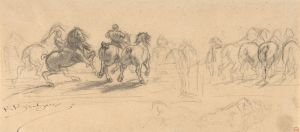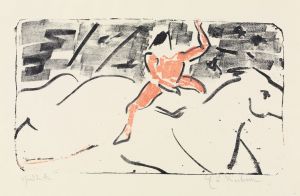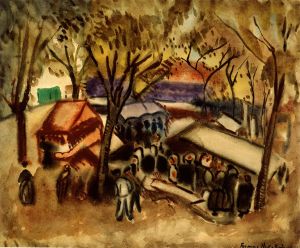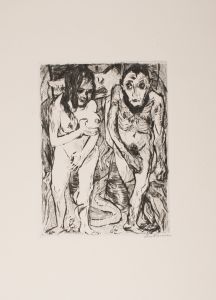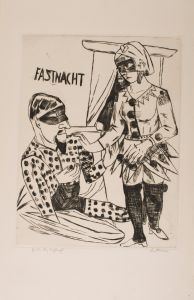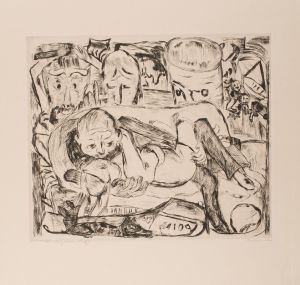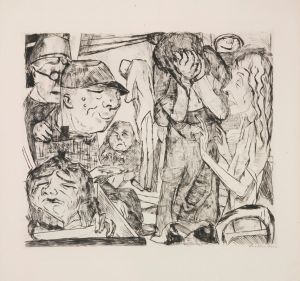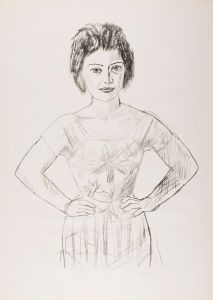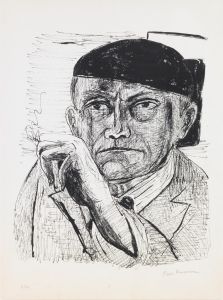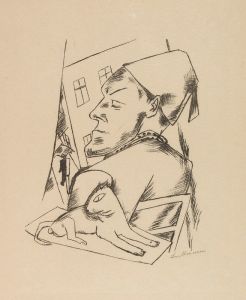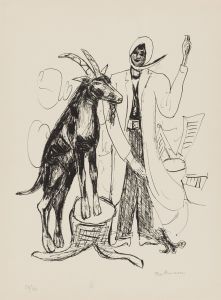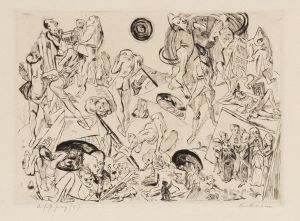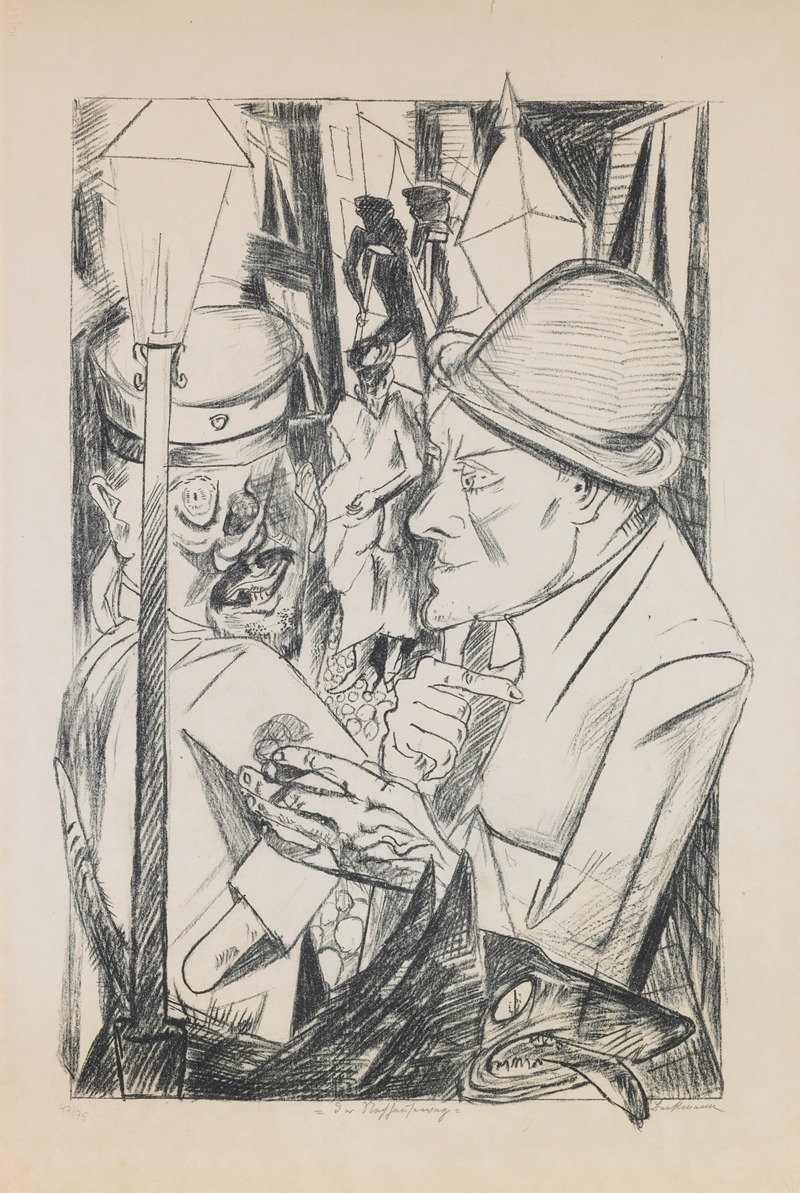
The Tightrope Walkers, plate 8 from the portfolio ‘Annual Fair’
A hand-painted replica of Max Beckmann’s masterpiece The Tightrope Walkers, plate 8 from the portfolio ‘Annual Fair’, meticulously crafted by professional artists to capture the true essence of the original. Each piece is created with museum-quality canvas and rare mineral pigments, carefully painted by experienced artists with delicate brushstrokes and rich, layered colors to perfectly recreate the texture of the original artwork. Unlike machine-printed reproductions, this hand-painted version brings the painting to life, infused with the artist’s emotions and skill in every stroke. Whether for personal collection or home decoration, it instantly elevates the artistic atmosphere of any space.
Max Beckmann was a German painter, draftsman, printmaker, and writer, known for his distinctive style that combined elements of Expressionism, New Objectivity, and a personal form of realism. One of his notable works is "The Tightrope Walkers," which is plate 8 from the portfolio titled "Annual Fair" (Jahrmarkt). This portfolio was created during a significant period in Beckmann's career and reflects his interest in the human condition and the complexities of modern life.
"The Tightrope Walkers" is part of a series of ten lithographs that make up the "Annual Fair" portfolio, produced in 1921. This series captures the vibrant and often chaotic atmosphere of a fairground, a subject that Beckmann used to explore themes of performance, illusion, and the precariousness of life. The portfolio was created during the Weimar Republic, a time of great social and political change in Germany, which influenced many artists of the period.
In "The Tightrope Walkers," Beckmann depicts performers engaged in the delicate and dangerous act of tightrope walking. The image is characterized by its dynamic composition and the tension between balance and imbalance, reflecting the broader existential themes that Beckmann often explored in his work. The figures in the lithograph are rendered with bold lines and stark contrasts, typical of Beckmann's graphic style, which emphasizes the drama and intensity of the scene.
Beckmann's choice of subject matter in "The Tightrope Walkers" can be seen as a metaphor for the uncertainties and challenges of life, particularly in the context of post-World War I Germany. The performers' struggle to maintain balance on the tightrope mirrors the societal struggles of the time, as people navigated the complexities of a rapidly changing world. This theme of precariousness is a recurring motif in Beckmann's work, reflecting his interest in the human psyche and the existential dilemmas faced by individuals.
The "Annual Fair" portfolio, including "The Tightrope Walkers," is significant not only for its artistic merit but also for its reflection of the cultural and historical context of the early 20th century. Beckmann's work during this period is noted for its exploration of the human experience, often depicting scenes of urban life, entertainment, and the interplay between reality and illusion.
Max Beckmann's lithographs, including "The Tightrope Walkers," are celebrated for their technical skill and emotional depth. His ability to convey complex themes through bold imagery and striking compositions has earned him a lasting place in the history of modern art. The "Annual Fair" portfolio remains an important example of Beckmann's contribution to the art world, showcasing his unique perspective on the human condition and the societal issues of his time.
Overall, "The Tightrope Walkers" is a testament to Beckmann's mastery of printmaking and his ability to capture the essence of human experience through art. The work continues to be studied and appreciated for its artistic and historical significance, offering insight into the mind of one of the 20th century's most influential artists.





